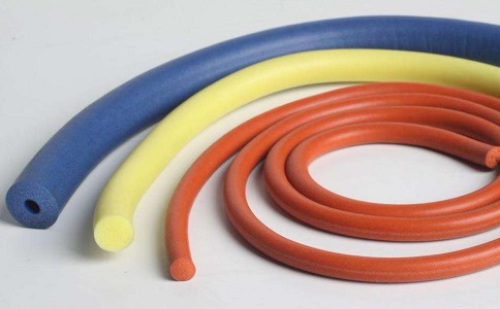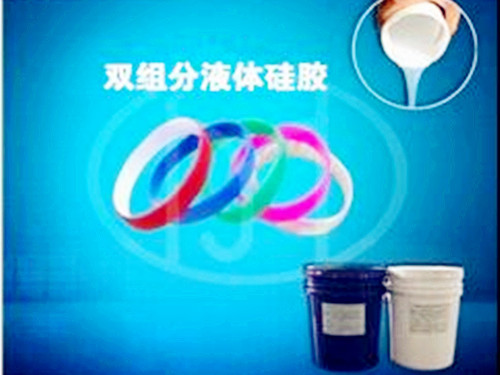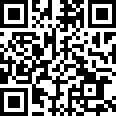Abstract: This article introduces the screen printing process of silicone rubber, analyzes the difference between it and ordinary screen printing process, explains its technical characteristics, and summarizes its own opinions on technical control.
Keywords: silicone rubber screen printing printing quality
With the rapid development of the communications and electronics industries, rubber keypad production has also developed into a mature technology. These key products are made of silicone rubber through high temperature molding, forming the required key surface, and then formed by spraying, screen printing, punching and stripping. I am here to make a preliminary discussion of this screen printing process.
First, the characteristics of silicone rubber keys
Silicone rubber as the key material, the hardness is generally about 45 °, printing a single key surface has convex, concave solitary surface and plane, all printed on the ground line. In addition to the requirement for accurate printing and clear graphics, printing requires the ink to be suitable for printing silicone rubber. The ink layer reaches a certain thickness, has strong adhesion and wear resistance, and does not change color after baking at high temperature. Therefore, it puts forward special technical requirements for the screen printing process.
Second, screen printing process
There are many screen printing platemaking methods, mainly photolithography method, that is, the photosensitive adhesive is directly coated on the Internet, and a certain thickness of the photosensitive film is formed into a graphic carrier after drying. The process flow is:
Network selection→selection frame→stretching→washing screen→drying→emulsion coating→exposure→developing→printing
The specific process is as follows:
1. Frame
Aluminum alloys are generally used, which are light in operation and hard to deform. Before the net is stretched, the net frame is wiped with cyclohexanone to remove the remaining grease and dirt, then wiped with industrial alcohol, and finally washed with water, and then dried the net frame. In the screen printing plate operation, it is necessary to dry many times, so the drying conditions and cleaning should be strictly controlled.
2. Stretch net
First select the screen, rubber screen printing use nylon screen, ink over the net rate is good, the tension is constant, the choice can cover the edge of the frame and more out of the screen frame 6 ~ 10Cm of the screen, with a pneumatic stretching machine stretching net , And with a tensiometer for six points test, to achieve the desired tension, coated with adhesive to make the wire mesh stick in the frame, with hot air to speed up the drying, after about 5mInR adhesion, you can turn off the stretching machine, will Excess screens stick to the outside of the frame to help maintain the mesh's adhesiveness. Cut off the excess mesh and dry it after washing the mesh with cyclohexanone and industrial alcohol. If the tension of the stretch net is not stable, the font may be misaligned and blurred, and the substrate with the chord surface may cause a difference in ink layer thickness. Flat-faced printing requires the use of a large-strained screen, and curved-surfaced printing surfaces require the use of small-strained screens. The applied screen tension range is 3N/Cm to 7N/Cm. The general tension of the screen has a short service life, and the process should be selected according to needs: 100 mesh straight wire screen for printing conductive ink, 200 to 300 mesh diagonal screen for printing the right word, and color blocks to ensure the ink layer thickness and graphics. The integrity.
3. Photosensitive adhesive
Commonly used manual coating, the blank screen leaning against the wall, coated with stainless steel coating tank 2 to 3 times, the angle is about 50 °, observe the color of the adhesive layer, thickness measurement with a film thickness meter. The thickness of the black ink and the base color on the scraper is 20-25μm, and the thickness of the hollow screen printing emulsion with radian is 28±3μm. The thickness of the emulsion varies in different processes and should be taken from the material. The thickness of the emulsion must be uniform. Into the oven drying temperature is controlled at about 40 °, to avoid the high temperature affect the performance of the photosensitive light, the safety of the light during the drying process should be used yellow lighting, avoid white light into the room, dry screen 10mIn exposure after exposure .
4. exposure
The exposure is to chemically react the photosensitive film at the non-image area, and the molecular structure between the films is cross-linked and hardened. From soluble to insoluble, after the development, the light-blocking layer (hardened part) and the image part of the transparent mesh hole (no light-sensitive glue is dissolved in water) are formed so that the ink passes through the mesh to form a printing pattern. Exposure using a vacuum stencil machine, using transparent tape to paste the film on the screen, the film is facing up, the stencil is attached to the film, covered with a black cloth frame, put down the lid, start the suction device (pressure about 110 ~ 120PA), etc. The pressure is stable. After the cover is pressed against the glass, the exposure device is activated. The exposure time is set according to the nature of the photoresist, the thickness of the film, and the thickness of the graphic. Usually controlled between 20S and 60S.
5. development
The exposed screen plate is soaked in fresh water with 3~4mIn, and then put on both sides of the film under a pressured water pipe until the film in the image part is washed cleanly at the temperature of °C°C, and the mesh forming the image is completely transparent. After the graphic part and the non-graphic part are revealed, touch the surface with hands to have a smooth feeling, no trace of dissolution, filter the water droplets and send it to the drying box for drying. Drying screens generally require secondary exposures to enhance screen life.
6. Mixing ink
Silicone printing ink must be suitable for the physical and chemical properties of silicone rubber, and can be firmly attached to the surface of the printing surface, it is mixed with other inks by a certain proportion of pigments, binders, solvents, and processed by three liquid wheel grinding. Kerosene is usually used as a diluent, and a single-liquid type ink is added with a vulcanizing agent (a trace amount) to enhance the imprint adhesion and abrasion resistance, and the double liquid ink is directly printed. The storage temperature of the ink is controlled at 0 to 10°C, and it is dried at a high temperature after printing.
7. print
Prepare jigs, screens, and inks before printing. The clean printing surface is free from oil stains. The surface is too smooth and must be treated with flame and corona to ensure that the ink adhesion is good. The slick screen printing jig is fixed on the machine table. The printing button is fixed on the fixture. The hardness of the scraper should be equal to the hardness of the rubber (about 55°). The positioning of the gauge line, the alignment of the screen on the screen and the alignment line on the cover plate, and the position is accurate. Sample overprint. Adjust the distance between the screen and the printing surface so that the squeegee can contact the substrate well. The coverage of the stroke of the squeegee must be greater than 2 to 5 cm. The angle of the scraper is controlled at about 75°, and the first inspection must be performed during the printing. The sample is compared and the sampling is performed on time so that the product quality can be fully controlled.
Third, process technology
The copy position of the screen printing film must correspond to the fixture. When the screen is printed, the film and the screen are in close contact to prevent the position from moving. During the design process, the thin line character should not be too close, otherwise it may cause adhesion. If the background color printing is required, the general background color is 0.1-0.2m smaller than the color of the surface, so that the printing surface can be completely covered and the product quality can be ensured. In the above process of copy screen printing, because the substrate is relatively soft and the tension of the screen is small, font blurring, inaccurate positioning, and inconsistency in the thickness of the ink layer are liable to occur during the processing of these problems. Must be carefully analyzed, there are curved print surface with a small tension screen, and the scraper should not be too hard, the ink flow is better (but to control the font thicker), the squeegee scraping speed is controlled at 12 ~ 24Cm / S. In the baking process of printed products, the oven temperature and baking time must be controlled to improve the product's adhesion.
Conclusion: Silicone rubber is a special kind of screen printing. In addition to soft substrates, soft squeegees are required. In addition to special inks, it is necessary to master the processes in order to print the ideals. The product.
Author: Chung Tai Printing Holdings Ltd. Peng Ziyang










